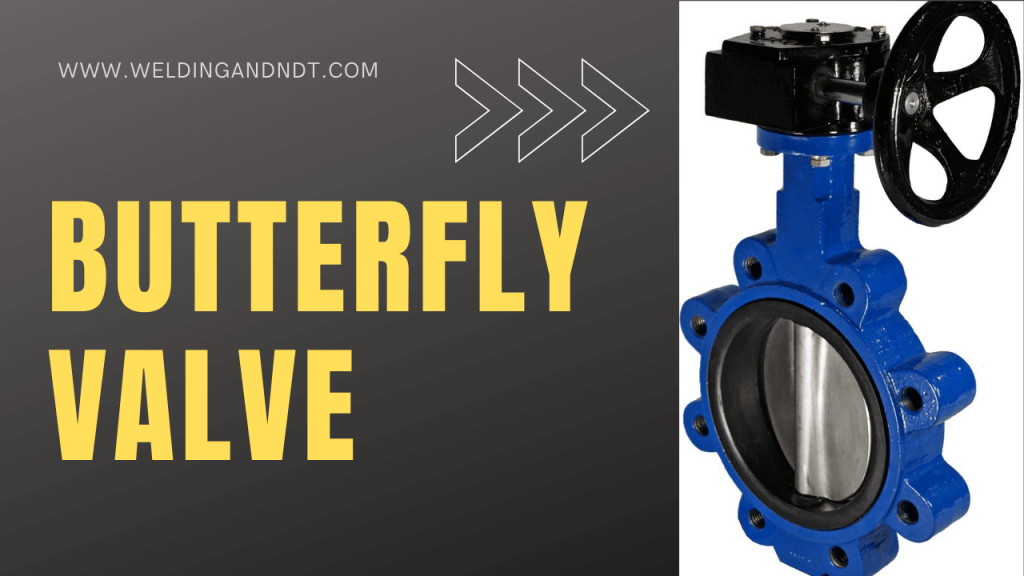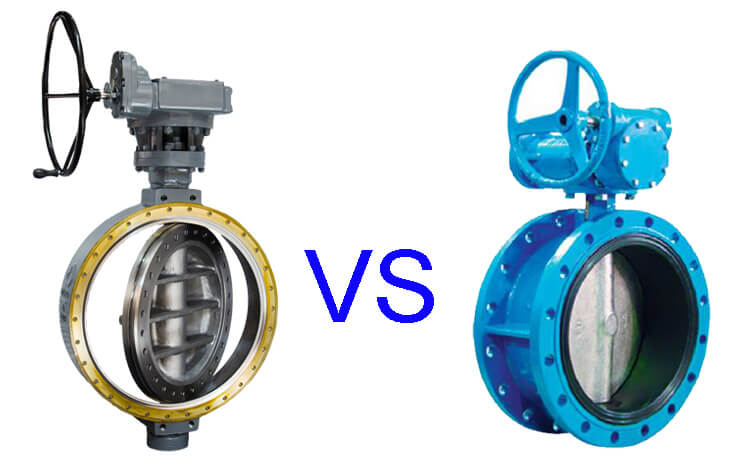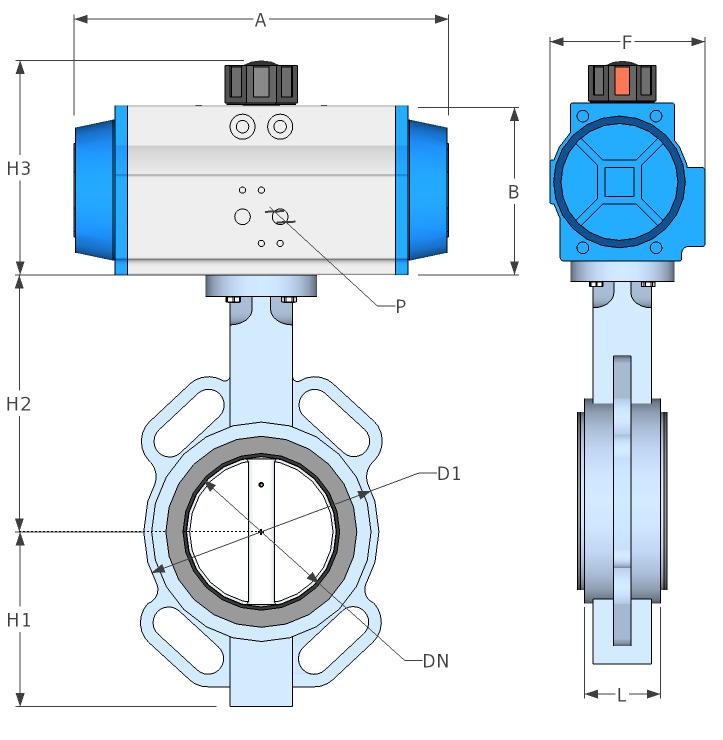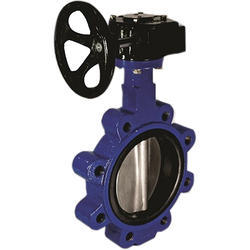In the Valves Part-1, we discussed what is a valve, its history, and its categorization (Click here to read).
In Part-2, we discussed Globe valves (Click here to read).
In Part-3, we discussed Gate valves (Click here to read).
In Part-4, we discussed Plug valves (Click here to read).
In Part-5, we discussed Ball valves (Click here to read).
In this part, we will learn about Butterfly Valves.
BUTTERFLY VALVES
Butterfly Valves are quarter-turn rotary valves in which a disc-shaped closure member is rotated through 90 degrees or less to open or close or regulate the flow passage. Butterfly valves may be used for flow in both directions.
The butterfly valve consists of the following four main components
- Body
- Disk
- Stem
- Seat
Body: Butterfly valves generally have bodies that fit between two pipe flanges, the most common being lug and wafer body design.
Disk: The disk is how the valve stops flow – it is equivalent to a plug in a plug valve, a gate in a gate valve or a ball in a ball valve. There are variations in disk design and orientation in order to improve flow, sealing, and/or operating torque.
Stem: The stem of the butterfly valve may be a one-piece shaft or a two-piece (split-stem) design. The stem in most resilient seated designs is protected from the media, thus allowing an efficient selection of material with respect to cost and mechanical properties.
Seat: The seat of a resilient-seat butterfly valve utilizes an interference fit between the disk edge and the seat to provide shutoff. The material of the seat can be made from many different elastomers or polymers. The seat may be bonded to the body or it may be pressed or locked in.
TYPES OF BUTTERFLY VALVES:
Efforts to adapt butterfly valves to wider temperature and pressure ranges have led to the development of a family of butterfly valves that may be fitted with seatings of a variety of construction materials to meet the operational requirements. Such seating’s may be metal-to-polymer or metal-to-metal, and may be designed to satisfy the requirements of fire-tested valves. There are different kinds of butterfly valves, each adapted for different pressures and different usage.
As per Disc Closure Design
- Concentric Butterfly Valve
- Eccentric Butterfly Valve
As per Piping Connection Design
- Wafer Type Butterfly Valve
- Lug Type Butterfly Valve
- Double Flange Butterfly Valve
Concentric Butterfly Valve
Concentric Butterfly Valve (Figure 1), also known as Zero Offset Butterfly Valve, is the most basic type of butterfly valve design. The stem passes through the centre-line of the disc which is further placed in the centre of the pipe bore and the seat is the inside diameter periphery of the valve body. The disc is in constant contact with the seat.
Figure 1
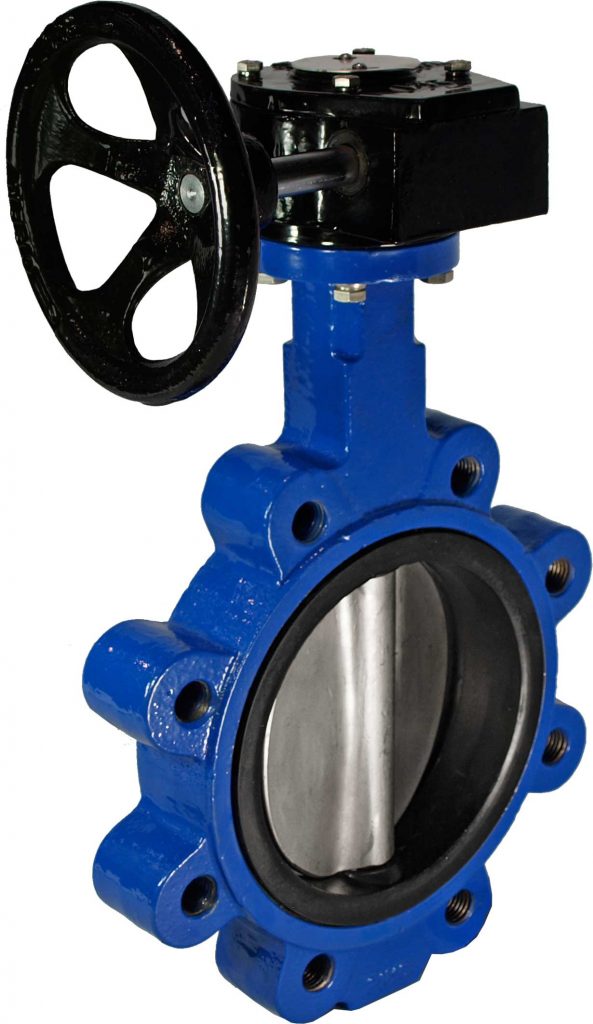
This zero-offset valve design is also called “Resilient Seated” or “Rubber Seated” because it relies on the flexibility of the seat rubber to efficiently seal the flow when closed. Concentric butterfly valves are commonly used for low-pressure ranges. An advantage of concentric butterfly valve is that the media going through the valve will not contact the body since the seat is constructed as a sleeve or cartridge inside of the body.
Eccentric Butterfly Valve
In Eccentric Butterfly Valves, also known as High-Performance Butterfly Valves, the stem does not pass through the center-line of the disc but instead located offset from the center according to the categories of double and triple offset valves.
Difference between Concentric & Eccentric/offset Butterfly Valve (Figure 2)
Figure 2
Single-Offset Butterfly Valve (SOBV):
When the stem is located right behind the centre-line of the disc, the valve is called Single-Offset Butterfly Valve. This design was developed to reduce the disc contact with the seal before full closure of the valve with the aim of improving service life of the valve. Single-offset butterfly valves have given way to double offset and triple offset butterfly valves.
Double-Offset Butterfly Valve (DOBV):
When the stem is located behind the disc with an additional offset to one side. This double eccentricity of the stem enables the rotating disc to rub over the seat for only about one to three degrees.
1st offset : The axis of the shaft is behind the centre-line of the sealing point of the disc to seat.
2nd offset : The axis of the shaft is eccentric to the centre of the valve/pipe line.
Triple-Offset Butterfly Valve (TOV or TOBV):
It is often used in critical applications and is designed similar to a double offset butterfly valve with one more offset. The third offset is the disc-seat contact axis. The seat surface takes a conical shape which coupled with the same shape at the ridge of the disc, results in minimal contact before full closure of the valve allowing the disc to seal against the seat with no friction. A triple offset butterfly valve is more efficient and allows for less wear. Triple offset butterfly valves are often made of metal seats to create a bubble-tight shut-off. The metal seats allow butterfly valves to be used in higher temperature ranges.
High performance butterfly valve designs use the pressure in the pipeline to increase the interference between the seat and the disc edge. These butterfly valves have higher pressure ratings and are prone to less wear.
Figure 3
Wafer Type Butterfly Valve:
The wafer type butterfly valve (Figure 4) is the most economical version and it is sandwiched between two pipe flanges and the flange bolts surround the valve body. The pipe flanges are connected through long bolts that cross the entire valve body. The sealing between the valve and pipe flanges is accomplished by using a tightly fitted seal, such as an O-ring, gasket, precision machined, along with a flat valve face on the downstream and upstream sections of the valve. This type of connection is designed for sealing against bi-directional differential pressures and to prevent backward flow in systems designed for universal flow.
Figure 4
Lug Type Butterfly Valve:
The lug-style butterfly valve (Figure 5) has threaded lugs outside the valve body. Two sets of bolts connect pipe flanges to each side of the bolt inserts without nuts. This design enables the disconnection of one side without affecting the other for dead-end service. Lug-style butterfly valves used in dead end service generally have a lower pressure rating.
Figure 5
Double Flange Butterfly Valve:
The Double Flange Butterfly Valve have flanged end on both sides of valve. The valve is connected to piping flanges through bolts. The double flange butterfly valve body configuration ensures precise installation in piping and can also be used as an end to the piping line, if required. The unique feature of this valve is its adaptability for lined pipes due to negligible disc protrusion beyond the body laying length. This also ensures installation close to other pipe fittings.
This article is written by
Mr. Goutham Rathinam
(BE-Mechanical & CSWIP 3.1-TWI,UK)
Email ID: goutham.r86@gmail.com

